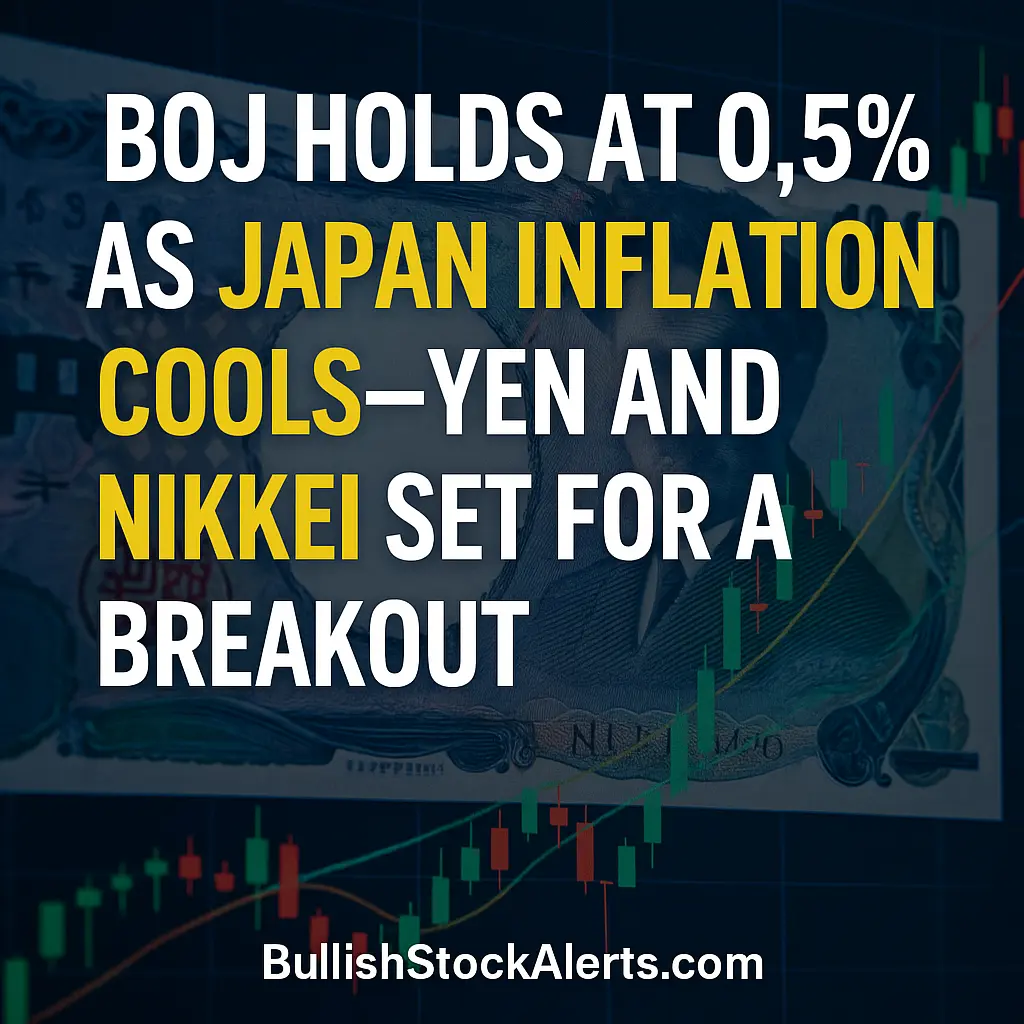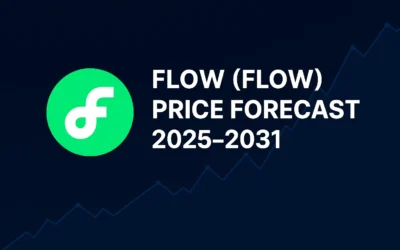Introduction
The Bank of Japan (BOJ) has once again defied hawkish expectations, holding its policy rate steady at 0.5% despite calls for a hike. August core inflation cooled to 2.7%, the lowest since November 2024 and marking a third straight monthly decline. With global central banks leaning toward easing, Japan’s cautious stance sets up a unique macro trade: a potentially strengthening yen alongside resilient domestic equities.
One of the Best Brokers in Europe
European traders looking to ride potential JPY volatility or invest in Japanese equities can access the Tokyo Stock Exchange and yen futures via Interactive Brokers, DEGIRO, or Trade Republic, all of which provide deep liquidity and tight spreads.
Financial Performance
- Headline CPI: 2.7% in August, down from 3.1% in July.
- Core Inflation (ex-food): 2.7% (matching forecasts).
- Core-Core Inflation (ex-food & energy): 3.3%, slightly below July’s 3.4%.
- Rice Inflation: Down to 69.7% YoY from a staggering 90.7% in July—still historically high.
Key Highlights
- BOJ voted 7–2 to keep rates unchanged, with dissenters favoring a hike to 0.75%.
- Inflation expectations remain in the 2.5–3% range, supported by food costs.
- Corporate reforms and rising wages are boosting domestic demand.
- HSBC and LDP leaders call for hikes as inflation stays above the BOJ’s 2% target for over three years.
Profitability and Valuation
Japan’s negative real rates continue to underpin equity valuations. Export-heavy sectors such as automobiles, industrials, and technology benefit from a weaker yen, while domestic consumption gains from rising wages and capital expenditure.
Debt and Leverage
Public debt remains above 250% of GDP, but Japan’s ultra-low borrowing costs and captive domestic bond market reduce immediate default risk. The BOJ’s patient policy helps contain refinancing pressures.
Growth Prospects
Economists see moderate GDP expansion fueled by:
- Corporate Governance Reforms driving productivity.
- Capital Expenditure in manufacturing and supply chain realignment.
- Rising wages supporting household consumption.
However, supply constraints and commodity price swings continue to cloud the inflation outlook.
Technical Analysis
| Asset | Short-Term (1–3 wks) | Medium-Term (3–6 mos) | Long-Term (12+ mos) |
|---|---|---|---|
| USD/JPY | Support 146, Resistance 150 | Potential drop to 142 if yen strengthens | Bullish to 138 if BOJ signals 2026 hikes |
| Nikkei 225 | Support 38,000, Resistance 40,500 | Range expansion toward 42,000 | Target 45,000+ with wage growth and reforms |
| Japanese 10Y Yield | Stable near 0.8% | Drift toward 1.0% if inflation persists | Slide back to 0.6% if global slowdown deepens |
Potential Catalysts
- October Inflation Data: A surprise uptick could revive hike expectations.
- Global Rate Cuts: Narrowing interest differentials may strengthen the yen.
- Corporate Earnings Season: Positive guidance could fuel a Nikkei breakout.
Leadership and Strategic Direction
Governor Kazuo Ueda continues to prioritize stability over premature tightening. His cautious approach aims to nurture a sustainable reflationary cycle while avoiding policy errors amid global uncertainty.
Impact of Macroeconomic Factors
- Currency: A narrowing U.S.–Japan yield gap could drive USD/JPY lower, boosting yen purchasing power.
- Commodities: Softer energy prices may further suppress headline inflation.
- Global Growth: A U.S. slowdown could limit Japanese export growth but support bond demand.
Total Addressable Market (TAM)
Japan’s $4.2 trillion economy and deep capital markets offer opportunities across FX, equities, and bonds, particularly in industrials and high-tech manufacturing positioned to benefit from supply-chain shifts.
Market Sentiment and Engagement
Options markets show elevated yen call activity as traders hedge against a BOJ pivot. Foreign investors remain net buyers of Japanese equities, drawn by governance reforms and attractive valuations.
Conclusions, Target Price Objectives, and Stop Losses
| Time Frame | Target | Stop Loss |
|---|---|---|
| Short-Term (1–3 wks) | USD/JPY 146–150 range, Nikkei 40,500 | USD/JPY 151, Nikkei 37,500 |
| Medium-Term (3–6 mos) | USD/JPY 142, Nikkei 42,000 | USD/JPY 148, Nikkei 38,000 |
| Long-Term (12+ mos) | USD/JPY 138, Nikkei 45,000+ | USD/JPY 145, Nikkei 40,000 |
Traders may look to short USD/JPY near 150 or accumulate Nikkei heavyweights on dips while maintaining disciplined stop losses.
Discover More
For more insights into analyzing value and growth stocks poised for sustainable growth, consider this expert guide. It provides valuable strategies for identifying high-potential value and growth stocks.
We also have other highly attractive stocks in our portfolios. To explore these opportunities, visit our investment portfolios.
This analysis serves as information only and should not be interpreted as investment advice. Conduct your own research or consult with a financial advisor before making investment decisions.
Looking to Educate Yourself for More Investment Strategies?
Check out our free articles where we share our top investment strategies. They are worth their weight in gold!
📖 Read them on our blog: Investment Blog
For deeper insights into ETF investing, trading, and market strategies, explore these expert guides:
📘 ETF Investing: ETFs and Financial Serenity
📘 Technical Trading: The Art of Technical & Algorithmic Trading
📘 Stock Market Investing: Unearthing Gems in the Stock Market
📘 Biotech Stocks (High Risk, High Reward): Biotech Boom
📘 Crypto Investing & Trading: Cryptocurrency & Blockchain Revolution
Did you find this article insightful? Subscribe to the Bullish Stock Alerts newsletter so you never miss an update and gain access to exclusive stock market insights: https://bullishstockalerts.com/#newsletter.
Avez-vous trouvé cet article utile? Abonnez-vous à la newsletter de Bullish Stock Alerts pour recevoir toutes nos analyses exclusives sur les marchés boursiers : https://bullishstockalerts.com/#newsletter.









0 Comments